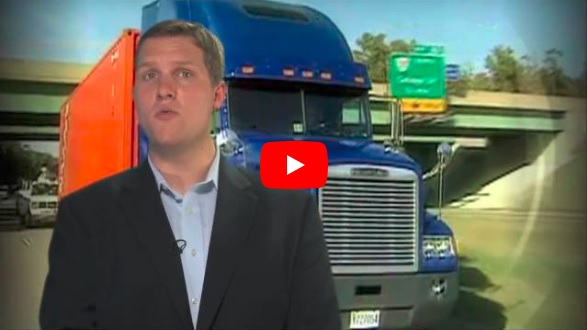Freight and Transportation Part 1

This is the beginning of a series that should be in 7 parts.
Honestly, I’ll never ever forget the very first time I pitched a proposal to the VP of Materials and Services for a multi-billion dollar energy company, suggesting that the company could save upwards of $1 Million by simply negotiating freight rates. I was absolutely dumb struck by his comment of, “why are you wasting my time with this half-baked project when you should know we’re not a manufacturing company and we don’t ship anything.” Is this real life or is it the creator of Dilbert Cartoons looking over my shoulder again? I turned on my heels and left totally abashed.
After reflecting on the admonition received I revised the presentation by adding a slide that said all companies could save money by modifying the way freight (inbound, outbound, small parcels, less than a truck load, truck load, rail, air, etc.) was handled. Regardless of the industry, freight savings were applicable because at least 10% to 20% of the total value of all purchases is directly associated with freight.
In a nut shell, if your company´s total purchases fall into the first column then jump to the third column to see the potential savings you could realize. Be mindful that these figures apply only to the purchases where there are hard goods involved (that is to say excluding services).
What are your total Freight Costs?
When the question is posed to the head of Purchasing, head of Finance, head of manufacturing, head of Supply Chain or Shipping, what happens is a blank deer in the headlights look. Not many know the freight costs!!!
You see, therein lies the real challenge and the dilemma!!! Most companies don’t know!!! Why is that you might ask? It’s simply because freight costs are embedded, or hidden within the cost of materials or hidden in the terms of the purchase order agreement. Pre-paying and allowing for prepay and a bill or FOB destination muddy the freight costs discussions. Only freight terms of FOB ORIGIN, and/or COLLECT will allow for true freight cost to be segregated and captured.
| 1. Total Annual Purchase Value | 2. Estimated Freight Cost (15%) | 3. Estimated Potential Savings (@ 50%) [1] |
| $5 Million | $750,000 | $375,000 |
| $10 Million | $1,500,000 | $750,000 |
| $20 Million | $3,000,000 | $1,500,000 |
Accounts payable should easily be able to provide this number (total annual Purchase Value), as should Purchasing. All these figures are averages and are greatly affected by the industry involved, products shipped, and freight.
Before we get too far down the road, the following are the general topics to be covered and then we’ll delve into how to go about extracting these savings as well as the ABSOLUTE need to track and publish the savings. Be aware that the savings will appear to be so easy that there will be doubters and you MUST BE able to prove every dollar as stated.
- Freight Costs.
- Definition of Terms.
- Areas of Opportunity.
- Strategies.
-
- Carrier Selection.
- Carrier Negotiation.
- Routing Guide (Inbound and Outbound).
- Miscellaneous.
- Small Parcels (UPS/FEDEX).
- Air Express (FEDEX/UPS/DHL). [2]
- Household Movers.
- Specialties.
- Hi/Wide/Heavy.
- Riggers.
- Train.
Why isn’t Purchasing negotiating the freight terms in that manner? Well, I believe there are 4 basic reasons for that:
- Purchasing people are not trained in that area and therefore they remain uninformed.
- Those Purchasing people who are aware feel that freight and transportation are dirty and too blue collar for them.
- To negotiate “FOB origin, Collect” would require extra work and effort for the buyers.
- Senior Supply Chain, Materials, and Procurement personnel are not knowledgeable and feel Fright and Transportation are not very glamorous therefore beneath them.
Am I being excessively tough on these people … NO …because I’ve seen and tried to sensitize these very employees … all to no avail!
Next in the series is: OK how do I begin and what must I do. The short answer is data mining and really getting to know your business.
Here’s a heads up:
- Freight costs are typically 10% to 15% of your total PO Values.
- Points of confusion.
- Terms and definition.
- FOB.
- Freight Terms.
- COD.
- Collect.
- Beneficial ownership.
- Who owns it and where do they own it.
- LTL/TL.
- Small Parcels.
- Hi/Wide/Heavy.
- Air/Rail/Expedited.
- Terms and definition.
[1] . Not including small parcels/train/air/ Hi Wide Heavy/nor purchases of services.
[2] . Depends on the current vehicle and like demand.
Your path to business success.

